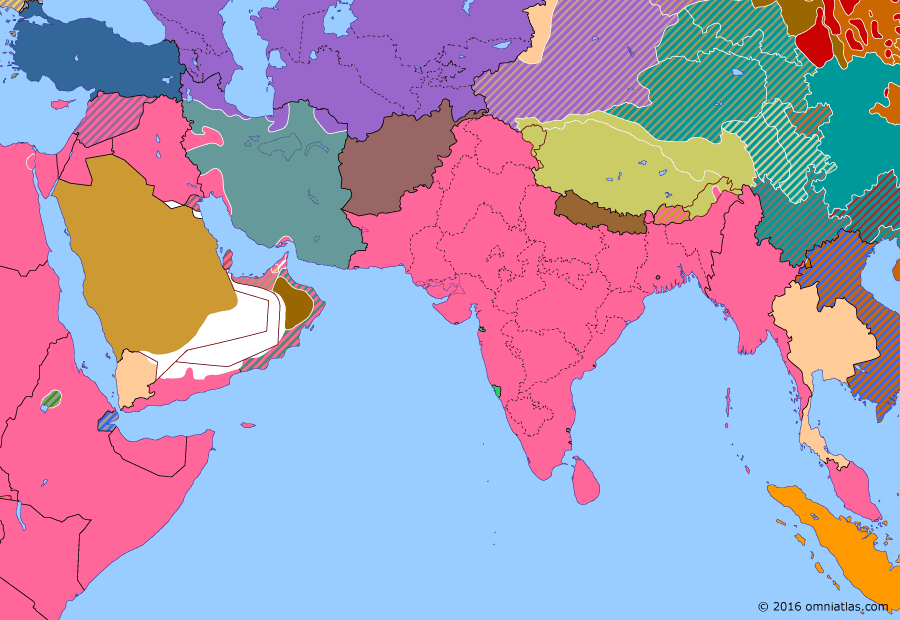Southern Asia 1941: Anglo-Soviet invasion of Iran
29 August 1941
29 Aug 1941
World War II: The Middle Eastern Theater
1880–1914 Pax Britannica
1914–1917 Great War in the Middle East
1917–1918 Fall of the Ottoman Empire
1918–1923 Anglo-French Overreach
1923–1934 Rising Nationalism
1934–1940 Arrival of the New Order
1940–1941 World War II: The Middle Eastern Theater
1941–1945 World War II: The South-East Asian Theater
1945–pres Independence
Anglo-Soviet invasion of Iran
When Germany invaded the Soviet Union in June 1941, Iran’s strategic position and oil reserves became even more important to the Allied war effort than before. In August the British and the Soviets launched a joint invasion of the country, deposing the defiant Reza Shah and opening up a supply route to the Soviet Union.
